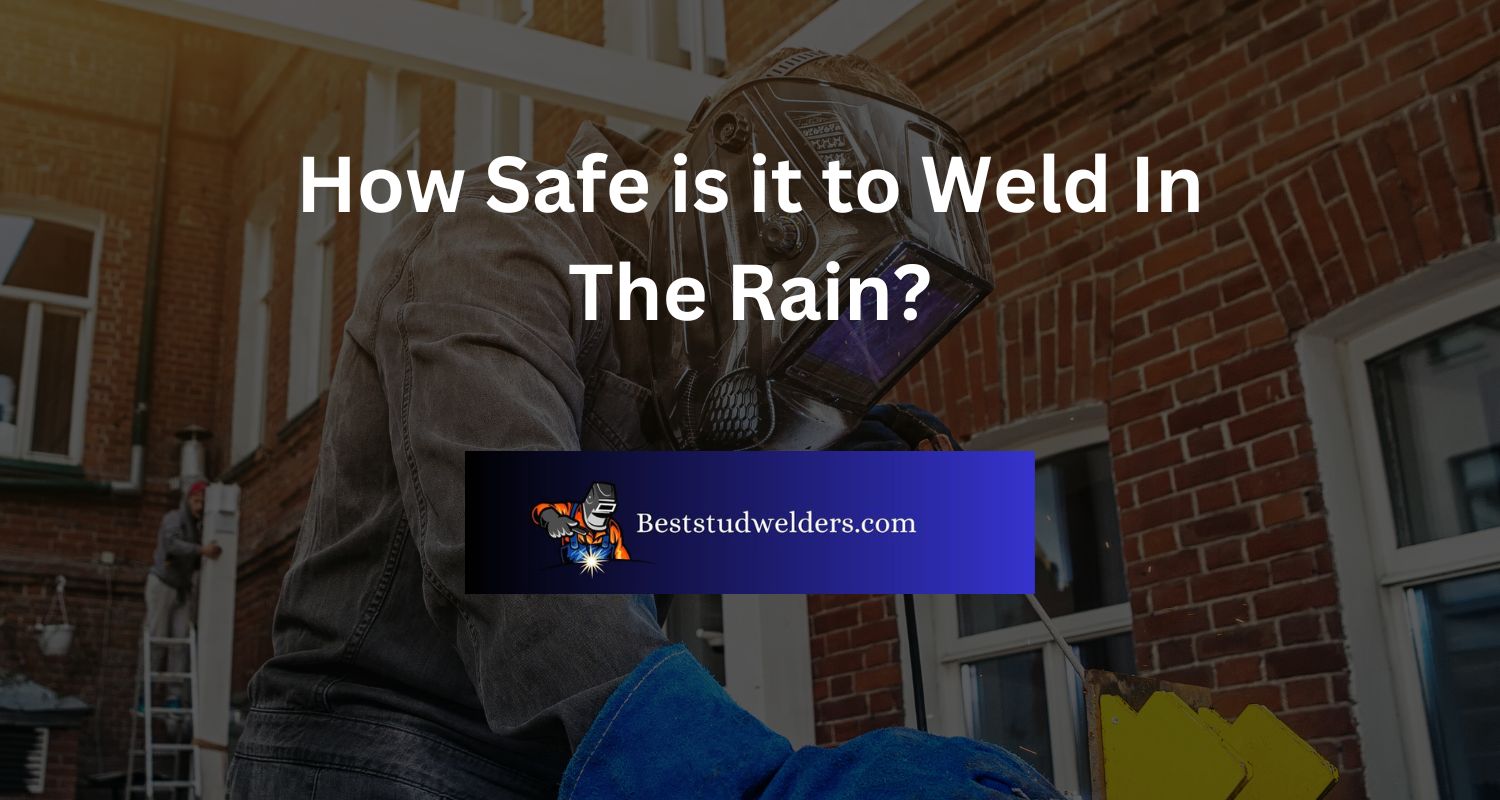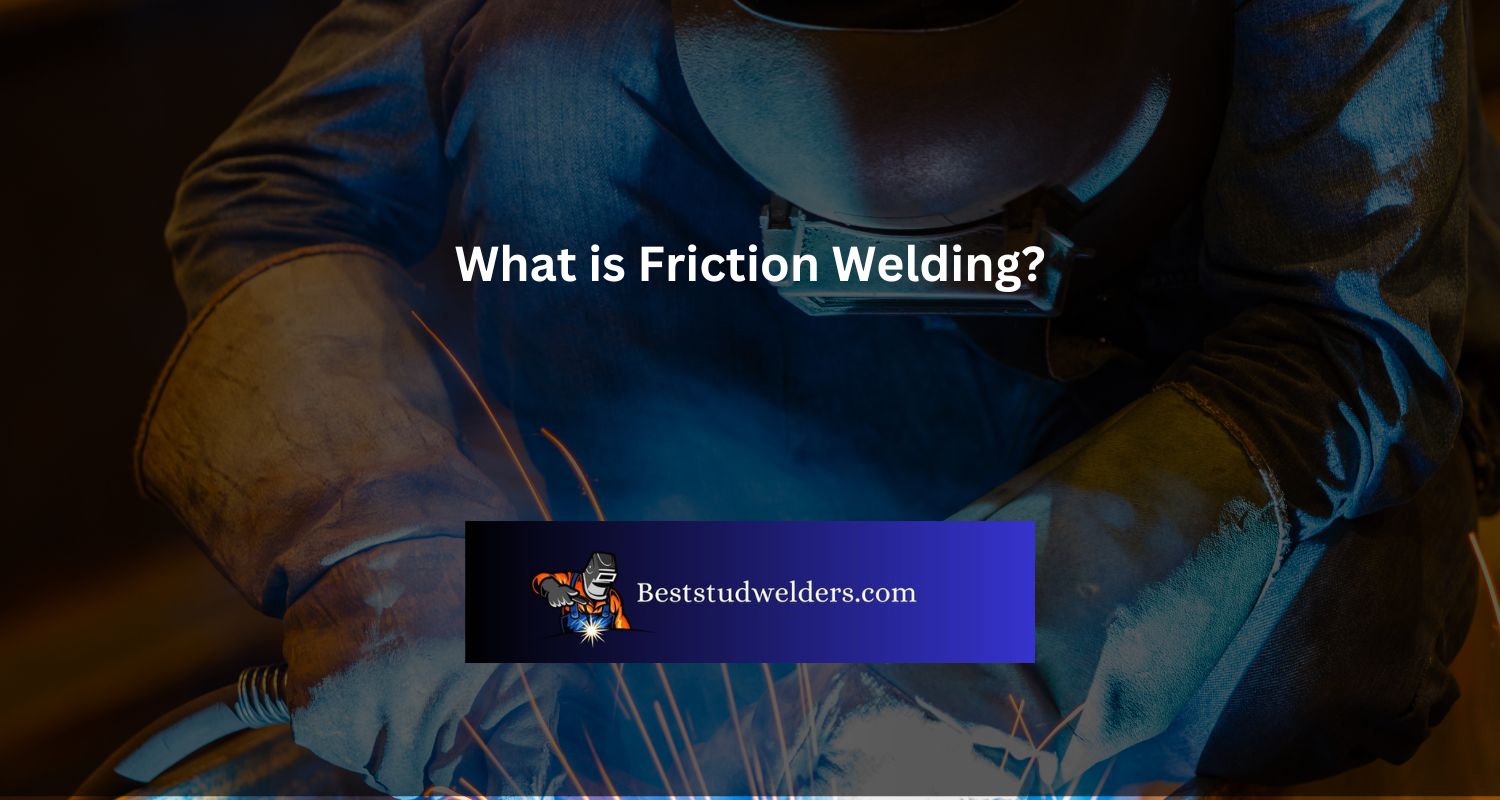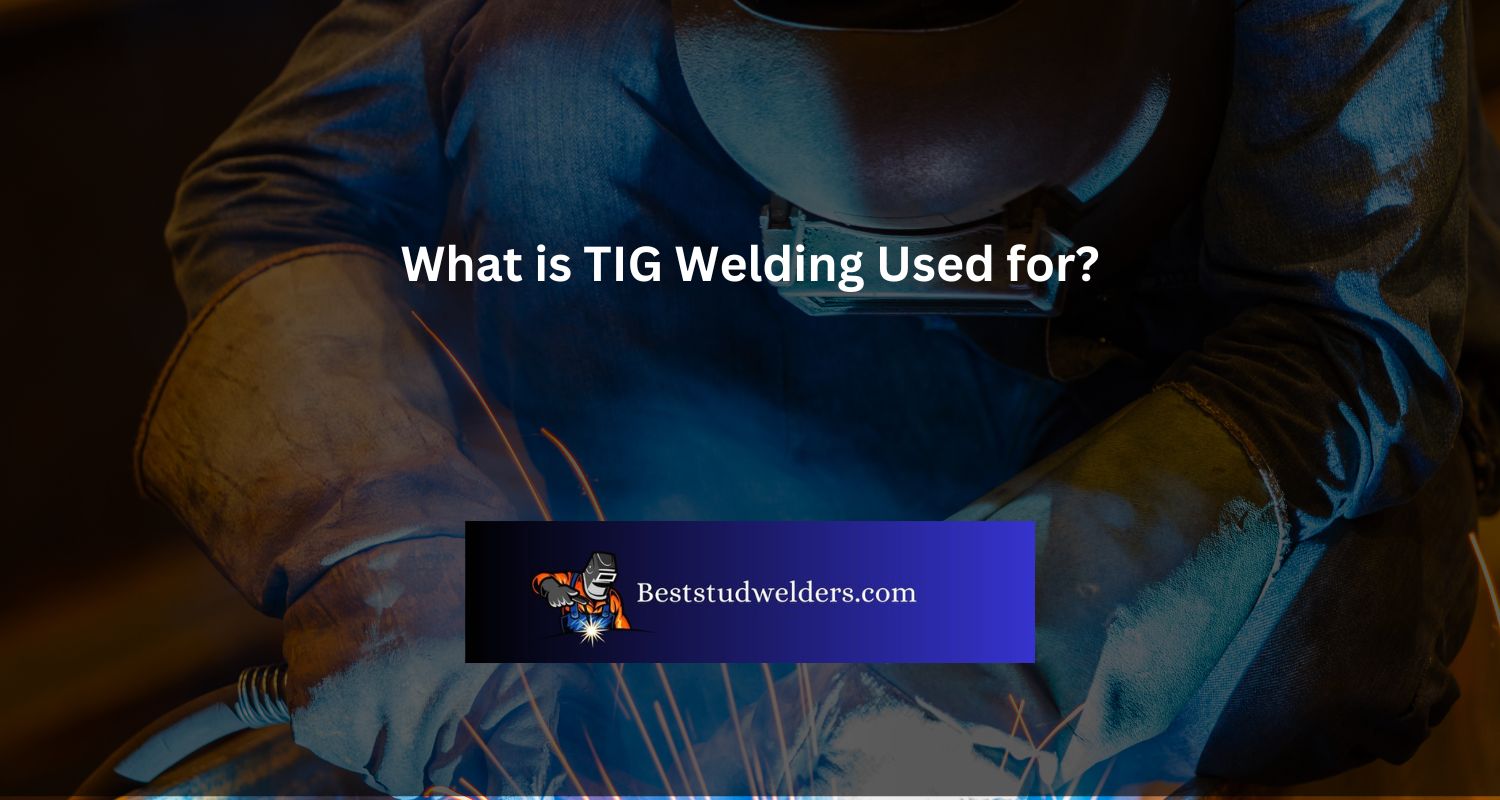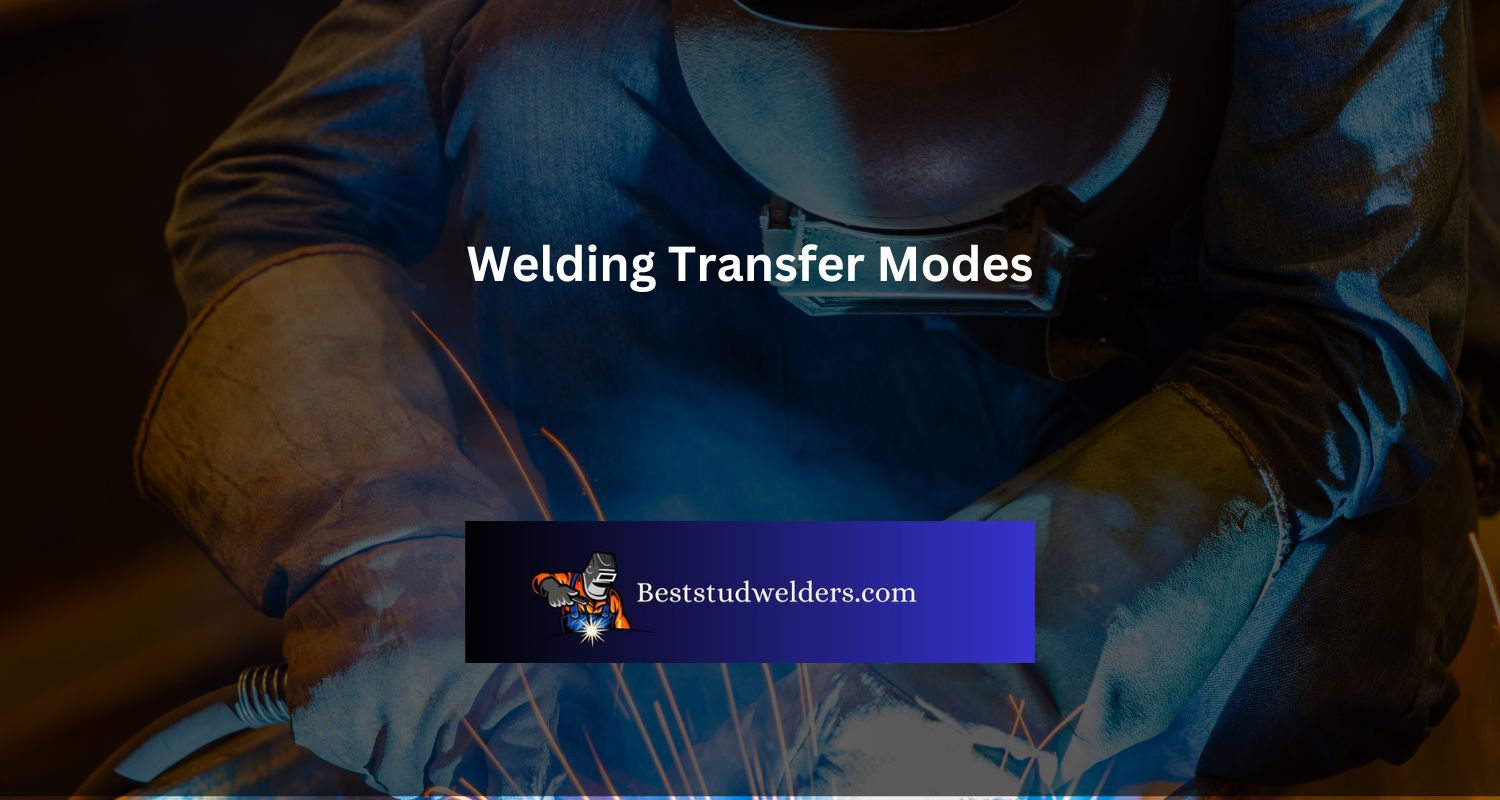Welding in inclement weather conditions such as rain is a topic of concern for welders. Rain can cause several issues, including equipment damage and dangers to the welder’s health. If you are planning to weld in the rainy season, it’s vital to have adequate protection for both yourself and your welding machinery.
Welding in the rain increases the risk of electrical hazards, which can lead to electrocution. The electric shock can be fatal if proper care is not taken. Additionally, moisture from the rain may cause corrosion on welding machines, leading to equipment failure.
To avoid this situation, one must take precautions before welding during the rainy season. One solution is to use dry blankets or tarps to protect your welding machine and equipment from getting wet. Moreover, using high-quality protective gear such as rubber gloves with insulation can help reduce accidents and provide better safety during rainy weather.
Pro Tip: Never compromise safety over productivity while welding in unfavorable situations like the rain. It’s essential to keep yourself, your workpiece, and equipment safe from any potential danger that might arise from adverse environmental factors like rainfall.
Rain or shine, welding safety should never be compromised.
Safety concerns of welding in the rain
To ensure your safety while welding in the rainy weather, it’s essential to understand the potential hazards you may encounter. In order to tackle the issue of safety concerns of welding in the rain with electrical hazards, slip and fall hazards, hazardous smoke and fumes, poor visibility, and damaged equipment, we’ll discuss the risks associated with these sub-sections.
Electrical hazards
Working in the rain can pose significant safety risks when conducting welding activities. One of the most significant hazards is the risk of electrical shocks, which can lead to serious injuries or death. This is because wet conditions can increase conductivity, and water can conduct electricity, increasing the chances of electrocution.
To avoid electrical hazards when welding in the rain, always ensure that all equipment is grounded and that proper insulation procedures are followed. It’s also important to check for any damaged cords or wires before starting work. Additionally, it’s crucial to wear appropriate personal protective equipment designed for use in wet conditions, such as insulated boots and gloves.
A key factor to consider when welding in wet conditions is the type of power source used. Some generators may not be suitable for use in damp conditions and could pose an even greater risk of electrical shock. Be sure to select a generator that has been designed explicitly for outdoor use, with additional waterproofing features.
Finally, adhere to all industry safety guidelines specific to wet weather welding activities. These guidelines will ensure safe working practices are being enforced while also minimizing the risks associated with welding in rainy weather.
Rainy days and welding don’t mix, but slipping and falling just adds insult to injury.
Slip and fall hazards
Rainy weather poses significant risks for slip and trip hazards of welding personnel on the worksite. Here are a few dangers related to Slip and fall hazards that must not be overlooked:
- Uneven surfaces: The rain can dampen the ground, making it more difficult for workers to maintain balance on uneven surfaces.
- Increased slippery conditions: Water on floors created by rain increases the risk of slips, trips, and falls for welders who are already working with dangerous machinery.
- Reduced visibility: Not only does rainfall increase the slippery nature of surfaces in welding operations, but it also reduces visibility of those performing tasks by obscuring their view.
It is essential to ensure that appropriate safeguards are put in place to reduce slip and fall hazards in wet weather conditions. Doing so will allow workers to stay safe while still bringing value through quality work.
Welding is a dangerous task even when carried out in ideal circumstances. However, according to the U.S. Bureau of Labor Statistics data on workplace injury and illness incidents between 2014 and 2018, approximately 17% suffered slip-and-fall injuries leading to temporary disability.
Inhaling the fumes from welding in the rain is like playing a game of lung roulette – but with worse odds.
.jpg)
Hazardous smoke and fumes
The welding process releases toxic fumes and smoke, posing a significant hazard to human health when inhaled. These emissions include ozone, carbon monoxide, nitrogen oxides and particulate matter that can damage the respiratory system or cause severe injury. The dangers are increased during rainfall as moisture can interact with fumes, intensifying their toxicity.
Furthermore, prolonged exposure to hazardous smoke and fumes from welding in the rain can lead to lung diseases like bronchitis or pneumonia. Continuous inhalation of such toxins could also result in cancer development or death in severe cases. Welders must use appropriate preventative measures like proper ventilation systems, respirators, and protective gear before engaging in the process.
To minimize health risks, welders should avoid working outdoors or during adverse weather conditions like rainfall when possible. Instead, they must engage indoor practices that ensure safety. Moreover, welders should undergo regular medical check-ups since early detection is crucial for managing any symptom that may have resulted from toxin inhalation.
In summary, it’s critical to note the importance of protecting yourself while welding by avoiding doing so in dangerous weathers like rainfall where toxic levels increase along with taking proper precautions to protect your lungs from irreparable harm caused by inhaling hazardous materials over time.
History tells us that many welders who were exposed continually to these harmful toxins over time suffered debilitating illnesses like lung cancer among others due to inadequate knowledge on prevention during the welding process leading now we know this is essential knowledge for every welder.
Rain or shine, welding in poor visibility is a lot like driving blindfolded – you’re either going to end up with a masterpiece or a complete disaster.
Poor visibility
The inclemency of rain can impede the visibility of welders, causing a challenging atmosphere for work. The safety concerns related to poor visibility arise from reduced perception and increased hazards. Filtration media also gets clogged up faster, rendering little or no protection.
To compound these challenges, rainwater fills surfaces and exposed crevices within the welding equipment with moisture. This moisture increases electrical conductivity in surfaces or equipment that would be expected to be insulated, which can lead to electrocution and other risks associated with wet conditions.
Moreover, any spills of chemical solvents or cleaning agents used during welding become significantly harder to spot due to the obscured view, leading to slip and fall risks.
According to Occupational Safety & Health Administration (OSHA), employers must follow adequate procedures by minimizing hazards that might harm employees while carrying out tasks. As per personal protective equipment standards 29 CFR: 1910.132 (d) (2), welders should utilize PPE such as helmets with proper lenses that may vary depending on the task being performed.
It is important for welders to understand how rainfall affects their workspace before commencing work in outdoor settings.
Looks like our welder got caught in the rain, because that equipment is more damaged than my ex’s self-esteem.
Damaged equipment
It is crucial to understand that welding in the rain can cause damage to equipment and pose serious safety concerns. The wet surface may lead to electrical hazards, such as electric shock or fire. Welding machines may not function correctly due to moist conditions, rendering them vulnerable to short circuits and corrosion.
As a result of the moisture, rust can develop on inner parts of welding guns or torches, deteriorating their performance and shortening their lifespan. Inadequate ventilation during welding in damp weather may cause fumes to accumulate and become hazardous.
It is advisable to store welding equipment in a dry place or use protective measures such as covers or tarpaulins when working in rainy conditions. Additionally, regular maintenance and inspection of devices before usage can minimize risks associated with moisture damage.
According to the Welding Safety Guide by OSHA, welders should take necessary precautions when working in wet or humid environments. They recommend removing standing water from work surfaces before starting work, using insulation for welding machines and avoiding damp clothes while performing hot-work tasks.
Adequate understanding of safety concerns associated with welding in the rain is essential for workers’ protection and productivity.
Why risk electrocution when you can just wait for a sunny day? Precautions for safe welding in the rain.
Precautions for safe welding in the rain
To ensure safe welding in the rain, you must take proper precautions. In order to accomplish this, the section, “Precautions for safe welding in the rain,” with sub-sections like “Adequate protection for electrical components,” “Proper footwear and non-slip flooring,” “Proper ventilation,” “Improved visibility,” and “Maintenance of equipment,” offer solutions to minimize risks and maximize safety measures.
Adequate protection for electrical components
To ensure the safety of electrical components while welding in damp conditions, proper insulation measures must be taken. Covering all exposed wires and ensuring that the electronic equipment is at least 10 feet away from the welding site can reduce the risk of damage induced by moisture.
Adequate safeguards should be put in place for shielding electrical components within welder’s reach, including but not limited to using non-conductive gloves, wearing insulated boots, and purchasing insulated mats for standing on while working. In addition to these precautions, equipping oneself with specialized waterproof bags or cases to protect essential electronic gadgets such as phones and cameras is wise.
It is important not to cut corners when it comes to electrical component protection during wet weather welding jobs. By taking necessary steps beforehand, such as checking the integrity of electrical equipment prior to welding tasks and drying equipment thoroughly after exposure to rain or humidity, long-term damage can be avoided.
Pro Tip: Always refer to manufacturer recommendations regarding protective gear for moisture-exposed welding environments, and always keep backup batteries on hand just in case.
Rain or shine, proper footwear and non-slip flooring are crucial for safe welding – unless you want to risk a slip-and-spark.
Proper footwear and non-slip flooring
Welding safety is critical, and having the right equipment and footwear can prevent accidents. When working in wet conditions, it becomes even more important to ensure proper footwear and a non-slip work surface.
Points to Note:
- Wear waterproof boots with deep treads for better grip
- Avoid shoes or boots with leather soles as they have poor traction on wet surfaces.
- Use a non-slip floor mat to prevent slips and falls
Additionally, workers should consider using shoe covers to keep their feet dry.
It’s also essential to clean the work area of mud or debris that can accumulate and create an unstable surface. A stable worksite prevents slipping incidents.
Historically, many welding accidents occur due to inadequate safety conditions like improper flooring or footwear. Diligent attention towards avoiding risky practices can drastically decrease the likelihood of work-related injuries.
Remember, if the fumes don’t kill you, the rain surely will – proper ventilation is key for safe and soggy welding!
Proper ventilation
It is essential to ensure that there is appropriate air movement during welding to avoid hazardous fumes accumulating in the workspace. The supply of fresh air and access to exhaust outlets are essential factors in preventing inhalation of welding fumes.
Good airflow in a pre-weld inspection and setup will help with creating a safe work environment. Before starting the welding process, ensure there is ventilation, such as open windows, fans, or air conditioning systems. Proper ventilation helps remove stagnant air filled with harmful welding fumes and keeps the welder safe.
Additionally, proper personal protective equipment (PPE) should be worn because poor ventilation affects not only others nearby but can be problematic for the welder. A respirator mask might also help in areas with poor suitability for breathing.
Pro Tip: Suitable airflow promotes perfect visibility for every task required while maintaining the work environment’s safety. When it comes to welding in the rain, improved visibility means more than just seeing your work – it means avoiding the temptation to use lightning as a handy welding light.
Improved visibility
With the unpredictable nature of rain, visibility during welding operations can be hindered. Ensuring clear visibility is crucial for safe and accurate execution. Employing appropriate measures to enhance visibility can prevent accidents and ensure project success.
One way to improve visibility during wet weather welding is by using lighting fixtures that effectively illuminate work areas. Effective lighting minimizes shadows and enhances clarity for welders who need to maintain focus on the task at hand. Additionally, good quality personal protective equipment such as specialized goggles with anti-fog coatings or face shields that are not obstructive to the welder’s vision can help improve visibility.
It is vital to note that apart from available lighting, one should also try to position themselves in a manner that provides the best possible view of their working area while taking into consideration overhead obstructions – this positioning can also minimize glare while maximizing light exposure.
Sources suggest that most weather-related accidents occur due to limited vision resulting from rainwater accumulation on helmets. Once the water droplets gather on a helmet’s surface, it distorts and obscures necessary visibility posing a risk of injury.
According to statistics published by The American Welding Society (AWS), 14% of incidents in welding occur due to bad weather conditions resulting in 12% fatalities annually.
In summary, effective lighting, good quality personal protective equipment, strategic positioning of oneself during welding operations amongst other measures are critical steps towards ensuring improved visibility during wet weather welding operations.
“The only thing worse than welding in the rain is not having properly maintained equipment to do it with.”
Maintenance of equipment
To ensure safe welding in the rain, it is essential to maintain the equipment properly. This includes conducting regular checks and repairs to prevent any accidents or damage while working with electric tools.
To maintain the equipment in good condition, follow these 5 steps:
- Regularly clean and inspect all equipment before use.
- Keep electrical cords and connections dry and free from debris.
- Store equipment in a dry area when not in use to prevent rusting or corrosion.
- Replace damaged or worn equipment parts immediately.
- Conduct annual inspections of electrical systems by a qualified electrician.
Additionally, make sure that all safety measures are followed during maintenance tasks. Never attempt repairs unless you are trained and authorized to do so.
Pro Tip: Regular maintenance is critical for safe welding in any weather. Make sure to follow manufacturer’s instructions for upkeep and watch out for signs of wear and tear on your equipment.
Remember, if you’re going to weld in the rain, you might as well do it while wearing a swimsuit. Just in case.
Conclusion and final thoughts on welding in the rain
The safety of welding in the rain requires careful consideration. One must be mindful of the risks involved and take necessary precautions. Exposure to moisture can hinder the process, weaken the weld, and lead to health complications. Though not entirely impossible, welding in the rain is not recommended for optimal results.
It’s essential to note that rainy days bring poor visibility, leading to accidents and faulty welds. Additionally, water droplets can corrode steel before it is welded, causing cracks and often reducing the strength of finished products.
Overall, it’s best to avoid welding in wet conditions whenever possible. However, if it’s a must-do scenario, ensure proper ventilation and protective gear are used.
Research conducted by ‘Welding Magazine’ finds that welding in humid conditions increases spatter rates up to 50%.
Frequently Asked Questions
Is it safe to weld in the rain?
Welding in the rain can pose significant risks to your safety. The presence of moisture increases the likelihood of electrical shock, and rain can also affect the quality of the weld.
What precautions should I take when welding in the rain?
If you must weld in the rain, take precautions such as using a tarp or awning to protect yourself and your equipment from the elements. Make sure you are wearing proper protective gear, and never work with wet gloves or clothing.
Can welding in the rain affect the quality of the weld?
Yes, moisture can affect the quality of the weld, causing porosity, cracking, or other defects. Welding on wet surfaces can also generate hydrogen gas, which can lead to cracking or brittleness in the welded joint.
Are there any special welding techniques I should use when working in the rain?
No, there are no special techniques for welding in the rain. Welding techniques remain the same, but you should take extra precautions to ensure safety and quality.
Is it better to avoid welding in the rain altogether?
Yes, it is generally better to avoid welding in the rain if possible. However, there may be instances where it is unavoidable, in which case you should take extra precautions to ensure safety and quality.
Paul Dixon is a certified welder with a wealth of experience in welding and related technologies. He started his career as an apprenticeship in welding, where he learned the ropes and acquired extensive skills in the craft.
Over the years, Paul has continued to sharpen his expertise, earning him top-rated welding certification. He remains one of the most outstanding welders in the industry.







